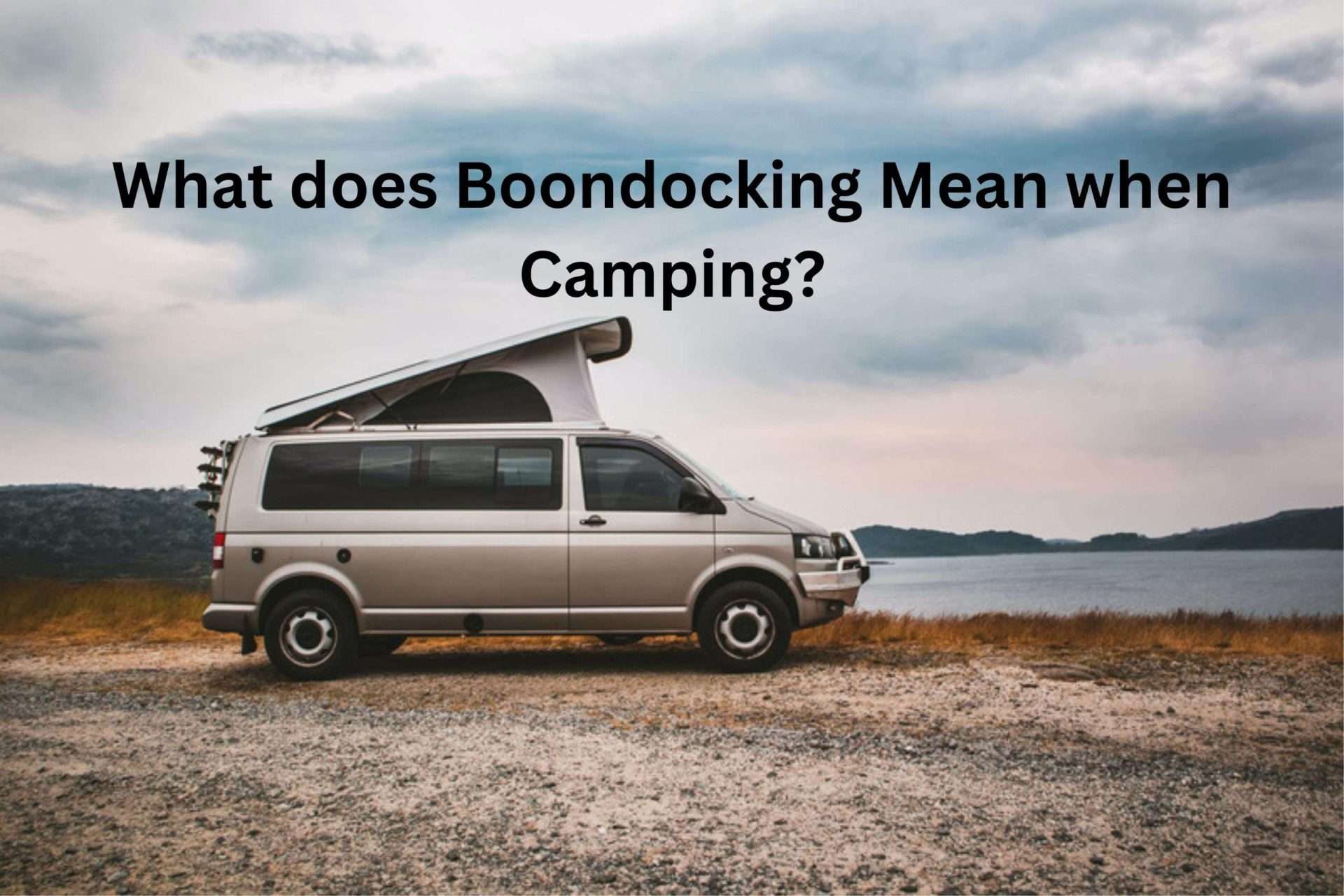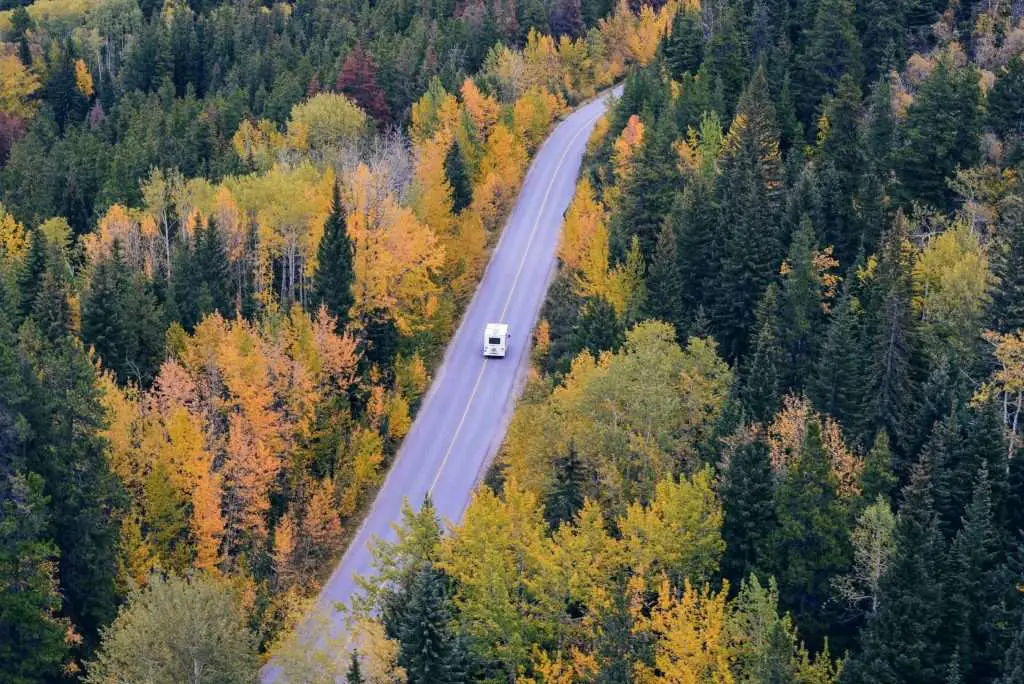What Does Boondocking Mean When Camping?

Last updated on May 26th, 2023 at 05:55 am
Boondocking, dry camping, and freedom camping are strange terms to most new and seasoned RV campers. If you’re an adventurous RVer always eager to try new things, boondocking should be on your list. But what does boondocking mean when camping? Here is your ultimate guide on boondocking and what to know before you start boondocking.
Boondocking Explained
So, what does boondocking mean when camping? Boondocking is essentially camping without hookups in the middle of nowhere- not in established RV camps. That means being completely independent off the grid. When boondocking, you are self-sufficient in everything from food to water, electricity, and sewer.
Boondocking is Different from Dry Camping
You’ll often hear the terms boondocking and dry camping being used interchangeably. But they are not necessarily the same thing.
Dry camping also involves RV camping without any hookups. However, while boondocking happens in public locations off the beaten path, dry camping takes place in designated campgrounds that are yet to be equipped with hookups.

Another difference between boondocking and dry camping is that boondocking is usually free (most of the time). You may need a permit for some locales, but it rarely goes over $20.
On the other hand, dry camping is slightly more expensive because you must pay for amenities like paved roads, bathhouses, and Wi-Fi.
Put in other words, boondocking is a form of dry camping. But dry camping is not boondocking.
The Start and Spread of Boondocking
The term boondock is the American version of the Tagalog word “bundók.” The term was coined by the US Army serving in the mountains or countryside during the Philippine-American war of the 1910s. The term boondocks initially referred to field boots designed to fit the rough terrain of the hard-to-reach mountainous countryside. It was later shortened to boonies.
When you come down to it, boondocking is the original way of camping and enjoying the free wild.
Boondocking started as a form of backpacking. The hikers would go off the beaten path for days or weeks, pitching tents out in the wild and relying on their skills, creativity, and gear to survive. As time passed, vehicles, particularly small trailers, were added to the picture to help with mobility.
Why People Love Boondocking
There’s no arguing that boondocking has surged in popularity in recent years. At the surface, this could be attributed to the increased popularity of RVing and the general scarcity of developed campgrounds.
The availability of off-grid-capable RVs that come complete with power and water sources means that fully booked campgrounds won’t be a reason not to enjoy RV camping. You can camp virtually anywhere, whether in the forest, beach, or desert and be self-contained.
That’s what makes boondocking such a fun experience. And it brings us to another crucial question that we often come across.
Is Boondocking Legal?
Boondocking gives you the ability to get in touch with nature the traditional way while avoiding overcrowded camping sites. But is it even legal?
Well, yes- boondocking is legal in most states. Actually, most states allow boondocking on most public lands as a way of decongesting the available campgrounds. It’s legal to boondock on most Bureau Land Management (BLM) land, national forests, and national grasslands.
But that does not allow you to park your camper in any open space with beautiful scenery and fresh air. Some of these public lands have designated camping spots that campers are limited to. Some areas also have regulations regarding the need for a permit, when you camp, and how close you can camp in relation to a water source or main road.
Note that boondocking is not regulated only on public lands. There are areas, for instance, in cities, where it’s illegal to boondock on private land, even with the owner’s permission. That said, it’s your duty to understand zoning regulations, boondocking permission requirements, and what you can and can’t do.
Important Tips when Boondocking for the First Time
Do a Test Run
Sharing the vast outdoors with only a few other souls is a dream come true for most campers. But before firing up your camper and taking the next dirt road, remember that boondocking is a completely different animal. You want to be sure that you can boondock comfortably and efficiently.
Before going on an actual boondocking trip, we recommend doing a test run. Try living out of your camper, whether right outside your house or at a campground but don’t hook it up. This will give you a rough idea of whether boondocking is fun and how long your power source and tanks will let you go off-grid.
Mind Your Power Systems
When boondocking, you rely 100% on your RVs batteries and other portable power sources. Your RV’s two 12-volt batteries may be enough to power your lights and run the water pump. But if you boondock regularly, it may be necessary to invest in other portable power sources like deep cycle battery banks and camping solar panels and battery kits. You may also bring a generator. But please let it be an inverter, not one of those obnoxiously loud contractor generators.
Conserve Your Water and Tanks Capacity
Boondocking successfully for several days comes down to conserving your resources. Two things that come to mind are your water reserve and the capacity of your gray and black tanks.
Your RV’s fresh water tank holds between 20 and 100 gallons of water. Gray and black water tank sizes vary, depending on RV size and class, but the average size is typically 50 gallons.
- Understand your capacity before hitting the road. Also, plan on how to save as much water as possible while conserving the capacity of your gray and black tanks. A good rule of thumb is to bring 3-5 gallons per person per day.
- Use as little water as possible when washing your camping dishes
- If you’re using biodegradable soap, you can collect the dirty water in a container and pour it outside instead of directing it to your gray tank.
- Set up a solar power camping shower to help you save space in your black tank. You can also use body wipes as a way of staying clean without using too much water or filling up your black tank.
Lastly, Stay Safe
Camping without hookups is fun, but it also puts you miles away from civilization, depending on how adventurous you are. Always let someone know where you’ll be and when you plan to go back. If setting camp in BLM lands, it’s smart to let the park rangers of your location. And when scouting for boondocking spots, read reviews of other RVers who have been to your target locations. If most of them recommend avoiding certain locations or routes, it’s in your best interest to do so.
Welcome to the free world of boondocking!
- Best 12V Portable Camping Fridge - August 13, 2024
- How to Insulate Slides on an RV - February 8, 2024
- How Much Water Does an RV Use Per Day? Understanding Your Daily Consumption - February 8, 2024

